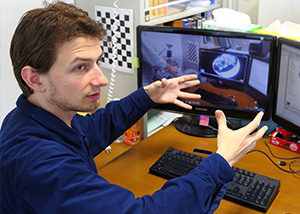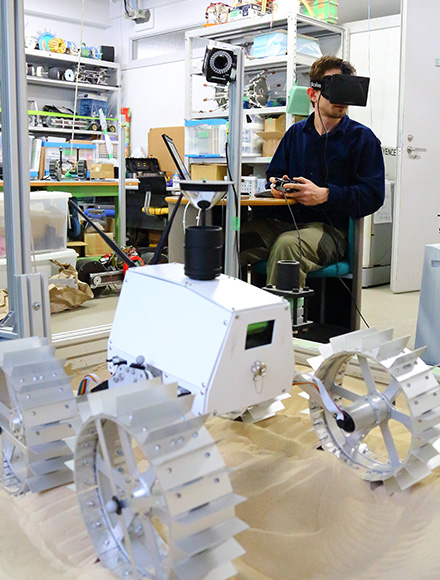- HOME
- Student Interview:Nathan Britton (USA)[Dream with space rover ]
Student InterviewNathan Britton (USA):
Dream with space rover

Nathan Britton comes from Colorado in the United States. His interaction with Japan started at 16 years old, when he did a Rotary Youth Exchange program in Japan, attending Sagae High School in Yamagata for 1 year. After his return, he so enjoyed his days in Japan that he wanted to keep studying Japanese in order to find his way back to Japan someday.
He went to school at University of Hawaii, since its eastern Asian language program was well recognized. While there he realized that studying Japanese just for learning a language was not useful, and decided to apply his Japanese ability toward something specific. At the time, he was attending Computer Science courses for fun, and so he changed his major to include Computer Science as well as Japanese, as a double degree. He then used this opportunity to enroll into another exchange program in engineering at Hokkaido University for his third year of undergraduate studies.

At his return to Hawaii, he focused on technology in robotics and artificial intelligence. Since his youth he was a space geek, but always thought that the space industry was an ivory tower, beyond his reach. But he met a couple of professors who were also teaching at the International Space University (ISU) in Strasbourg, France, who encouraged him to get involved. He applied, was accepted, and then moved to Strasbourg to complete his Masters’ degree in Space Studies. There, he learned about space science and engineering but also politics, policy, law, biology, economics. The interdisciplinary nature of the education there gave Nathan a sense of how much it costs to build a spacecraft, how to these projects are usually funded, and the legal hurdles that must be maneuvered to make it happen.
Nathan met Professor Yoshida at ISU, when he came to teach robotics in Strasbourg. Then, for the internship required for every student at ISU, Nathan came to Professor Yoshida’s laboratory at Tohoku University, and got involved for the first time in the Google Lunar XPRIZE. His internship was a zero-phase study in cooperation with XPRIZE team White Label Space; he was to determine whether they could develop a 10 kg rover for the moon and satisfy the list of requirements. His report was the first design of the White Label Space rover.
After graduation from his Masters’ program, he came back to Tohoku University in April 2010 as a Monbusho graduate researcher, and continued his work on the rover. He took the first prototype from the design on paper through several iterations and built it, programmed all the software, then maintained the system through various field tests. White Label Space has now become Team Hakuto, the sole Japanese team in the XPRIZE, and Nathan and his team are now on the design phase again for the next rover. This time it is no prototype, but the actual flight model that will go to the Moon. They have more resources, more people to help. It is scheduled to land on the moon in the second half of 2016.
